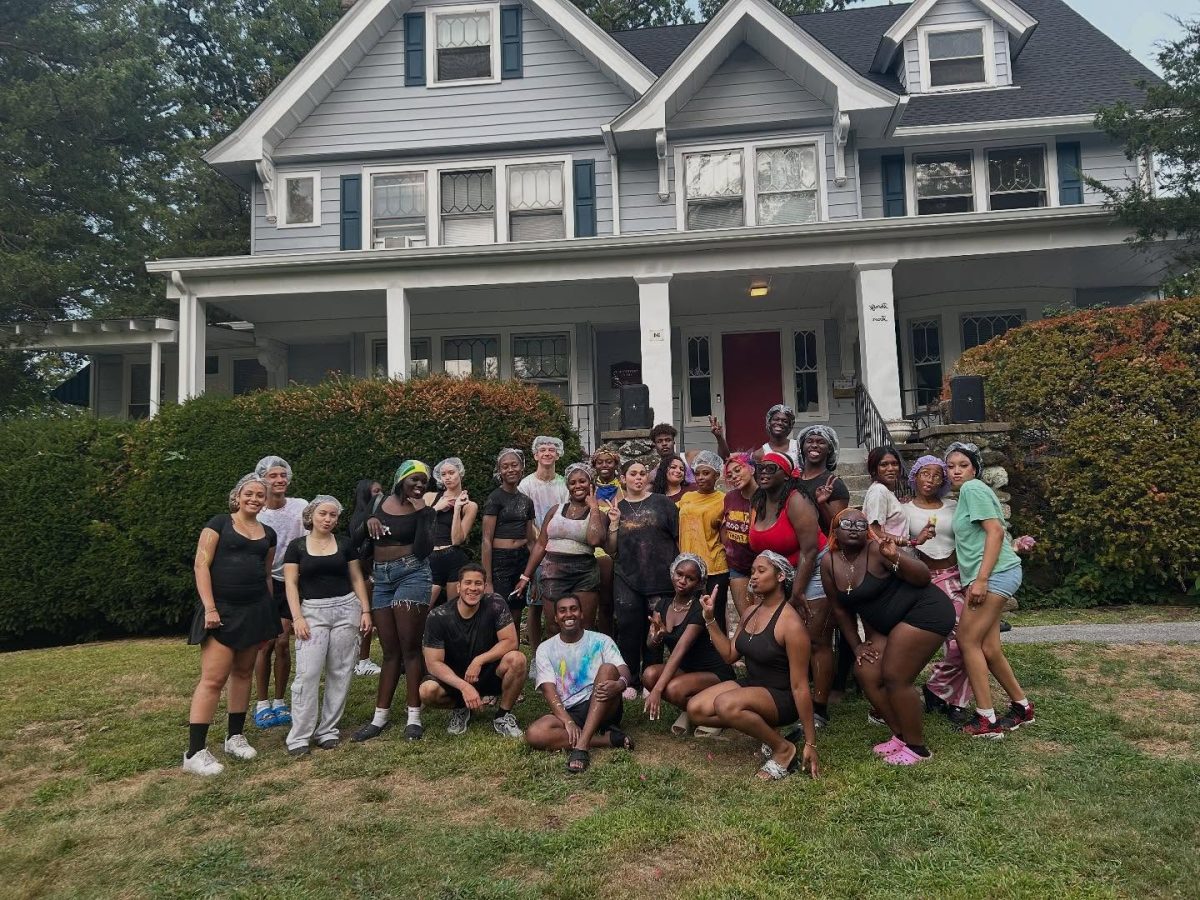The Model United Nations Club hosted an informational panel on Oct. 17 providing an overview of the Russia-Ukraine War and possibilities for creating peace. The Model U.N. executive board (Model U.N. e-board) facilitated the panel with an audience Q&A afterward. Before starting the panel, the Model U.N. e-board stressed the importance of civil dialogue and audience members drawing their own conclusions from the information presented. “It’s not up to us to tell you what to think,” explained Team Coordinator Mekias Assefa ’27. “Part of staying informed is forming your own beliefs based in fact.” After the disclaimer, the panel analyzed the political structure of the Russian government and the Ukrainian government, highlighting the contrast between Ukrainian democracy and Russia authoritarianism as a factor in the ongoing conflict.
Shifting to an analysis of the conflict’s start, the e-board explained the conflicting historical narratives underpinning Russian war goals and Ukrainian war goals. For Russia, Ukraine is simply a region of historical Russia and – consequently – views Ukrainian nationalism as an “affront” to their territorial integrity. The 2014 Russian annexation of the Crimea – at the time part of Ukraine – demonstrates Russian revanchism, or desire reverse territorial losses. The panel stressed how territorial disputes arising from the existence of the U.S.S.R. influence the conflict today, acknowledging that the transfer of Crimea to Ukraine (at the time a Soviet republic) is a telling example of how historical narrative impacts war goals on both sides.
Tragically, the brunt of the war’s cost is felt by the civilian population. The e-board noted how, according to the U.N. Human Rights Monitoring Mission in Ukraine, there are currently over 29,330 civilian casualties – including 11,500 civilian deaths. In a war dominated by periods of stalemate and sudden offensives, the military cost also clocks in at a staggering 1 million soldiers wounded or killed on both sides. Although Ukraine is currently on the offensive, neither side is prepared to rule out the possibility of absolute victory.
Amidst the horrific fighting, the panel outlined the international community’s response and the promise of various peace proposals. For example, Brazil and China’s “Friends for Peace Plan” advocates for direct dialogue between both parties at the negotiating table, international cooperation to prevent formation of regional divisions and an increase in humanitarian aid. Despite prisoner exchanges and limited humanitarian ceasefires to handle the large flow of refugees, the panel somberly noted that no comprehensive peace agreement has the necessary support to begin implementation. Despite this uncertain reality, the panel concluded with a resounding case in favor of a peace that is sustainable and will address future sources of conflict.
“The only absolute victory in war – for all parties involved – is a sustainable peace,” remarked Marketing Chair Sarai Acosta ’25.





